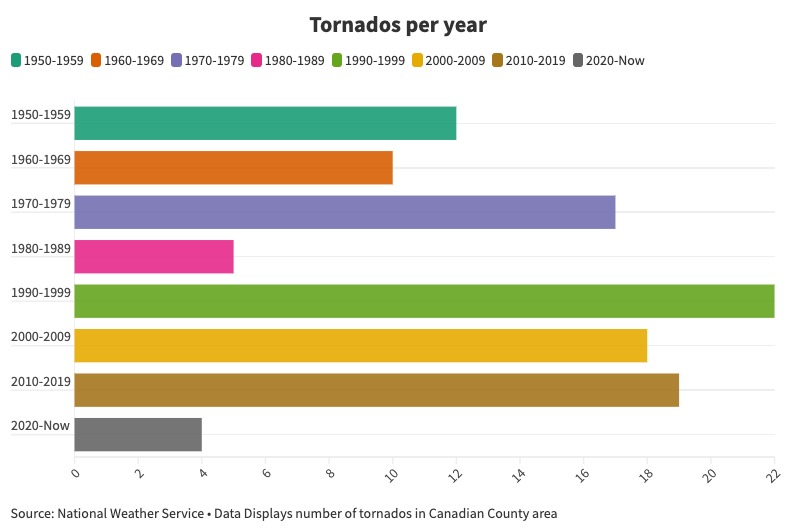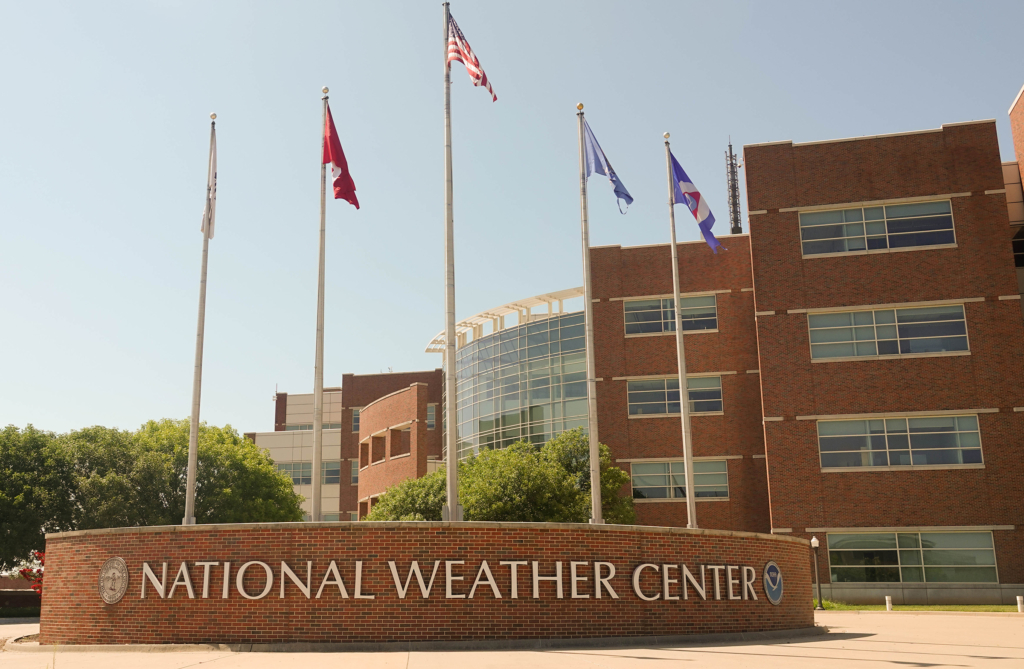
By: Kate Menz, Bishop McGuinness High School
Oklahoma’s weather is already extreme, and it’s only going to get worse.
According to the Environmental Protection Agency, climate change will cause Oklahoma’s weather to become warmer; droughts and floods are going to become more severe.
“People have increased the amount of carbon dioxide in the air by 40 percent since the late 1700s,” a 2016 report from the EPA said. “These gasses have warmed the surface and lower atmosphere of our planet about one degree during the last 50 years.”
Because of this increase in heat, water evaporates more quickly and droughts become more frequent. “As rising temperatures increase evaporation and water use by plants, soils are likely to become even drier,” the EPA report said.
This will mean more demand for water, which will become less readily available and could pose a number of different problems for Oklahomans. In recent years on average there are 13 days above 100 degrees per year, however the EPA predicts that 70 years from now Oklahoma is likely to have three to four times as many days above 100 degrees per year.
Climate change also increases the potential for storm surges. Heat causes more water to evaporate. When these storms occur they are usually intense and produce a lot of rain.
“During the last 50 years, the amount of rain falling during the wettest four days of the year has increased about 15 percent in the Great Plains,” the EPA report said.
When drought conditions are met with rain, the dry soil is unable to absorb the immense amount of rain, causing runoff.
Betsey Streuli is a former attorney for the State Department of Environmental Quality. She believes climate change will be detrimental to Oklahoma’s environment.
“It doesn’t take much, I would say, as a result of climate change, for us to go from drowning to drought,” Strueli said. “You’ve just got to be real careful to make sure that you’ve got cities and municipalities undertaking big efforts to separate sewer from stormwater so that it doesn’t have quite the impact on potable drinking water supplies.”
Some scientists believe climate change will cause an increase in tornadoes while others believe they will decrease. The EPA’s report shows the science remains unsettled.
“Rising concentrations of greenhouse gasses tend to increase humidity, and thus atmospheric instability, which would encourage tornadoes. But wind shear is likely to decrease, which would discourage tornadoes,” the EPA report said.
Drought and flooding will create major issues for farmers, which will in turn make food production more difficult.
“Long dry spells cause agriculture to not be able to properly grow and develop and then flooding can also do the same thing as an opposite,” said meteorology student Gwyneth Glanton.
Heat is also a major issue for farmers and food production.
“The temperature has to drop below a certain point in order for crops to properly bloom and to develop. And so if it’s so hot outside and the minimum temperature doesn’t go below a certain temperature, then that will also hurt our crops,” said Glanton.
Streuli said ranchers will have more trouble finding food sources for cattle because it will be harder to grow hay.
“When you can’t grow hay locally, then other regions of the country where you might be able to import hay are underwater from heavy rain events. You know it just affects everyone all the way I mean, from coast to coast,” Streuli said.
Because of the dry conditions, wildfires will become more frequent. The majority of wildfires occur during late fall and winter. During that time low relative humidity in combination with dry vegetation creates the ideal environment for wildfires to occur.
“Most of the large wildfire events (more than 1,000 acres) in our state, occur in December and January, which coincides with dormant vegetation and periods with the lowest precipitation and relative humidity,” a report from the Oklahoma Cooperative Extension Service said.
Within these environments lives a multitude of native plant and animal species that are also impacted by climate change.
“We’re already seeing vast swaths of forests of indigenous trees that we’re losing as a result of climate change,” said Streuli.
Wildfires destroy native grass and plant species. The plants are unable to compete with invasive non-native species.
“When fire destroys the natural cover, the native grasses and woody plants may be replaced by non-native grasses, which can become established more readily after a fire.” The EPA study said, “Because non-native grasses are generally more prone to intense fires, native plants may be unable to re-establish themselves.”
The fact that Oklahoma’s weather patterns are always changing is proof that Will Rogers was right when he said, “If you don’t like the weather in Oklahoma, wait a minute, It’ll change.”







